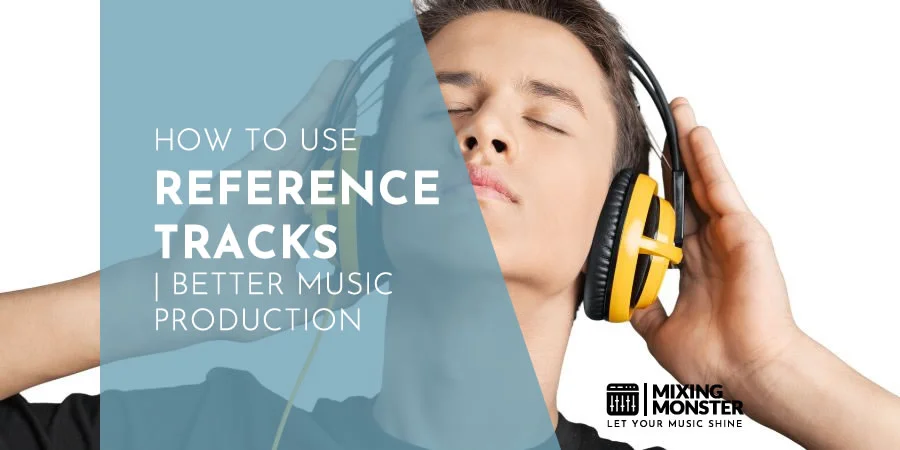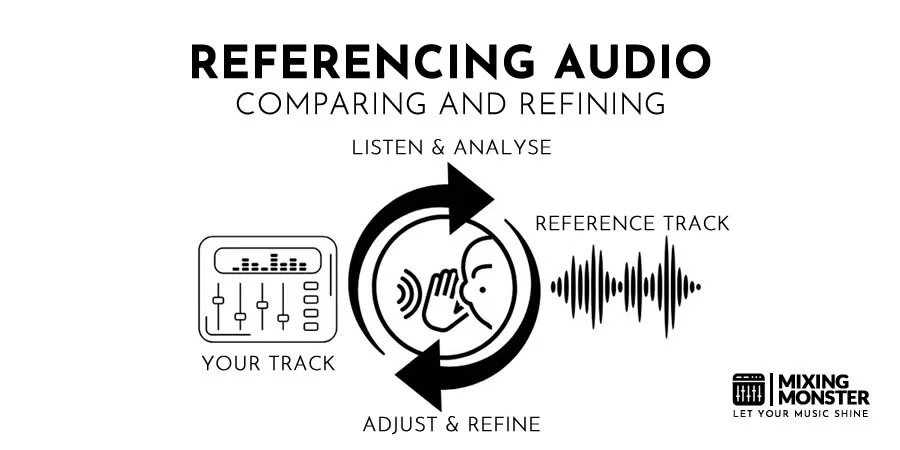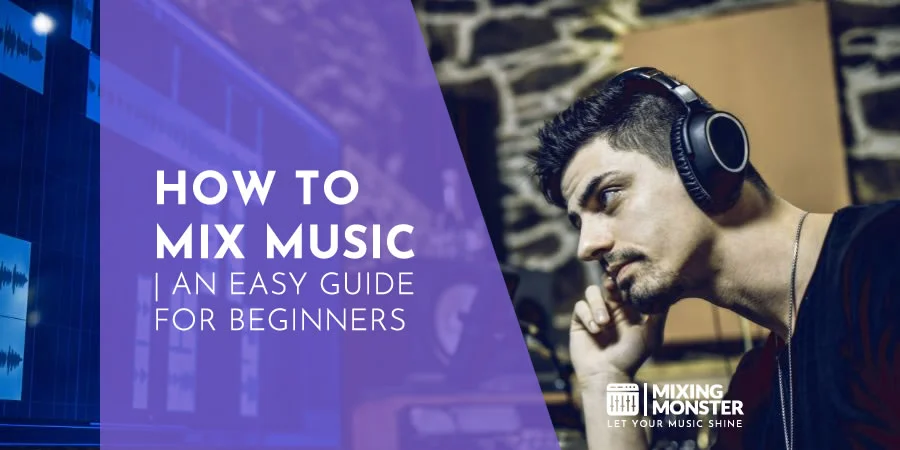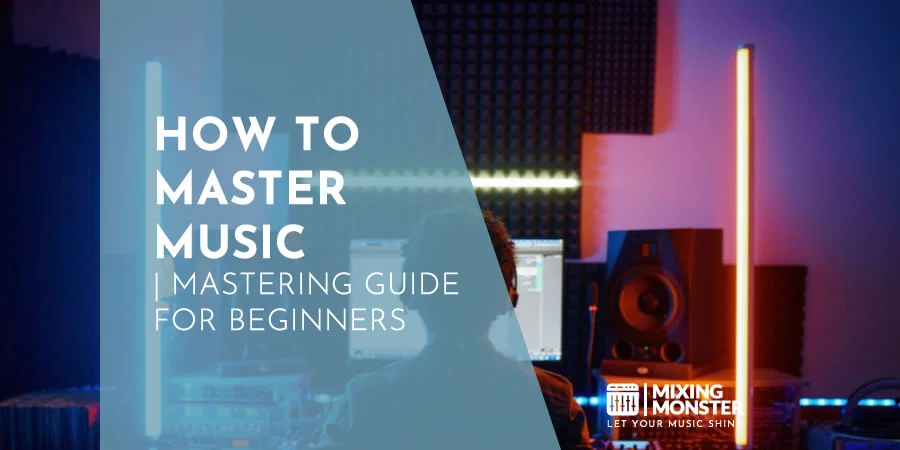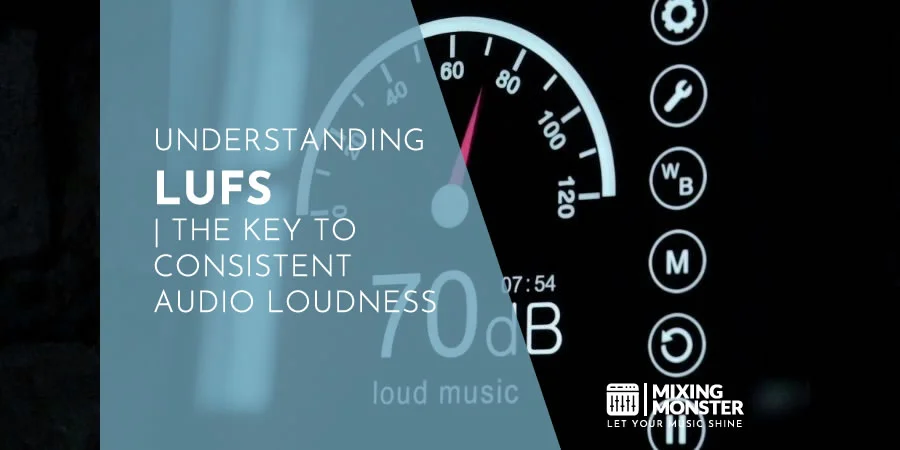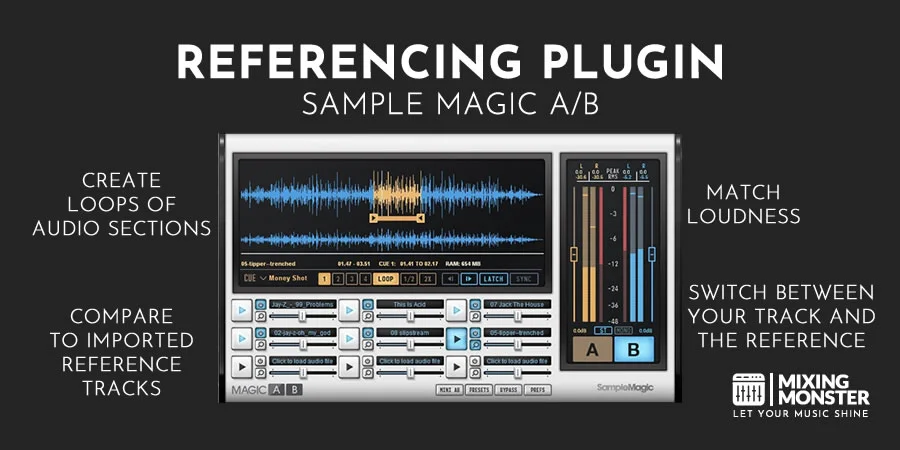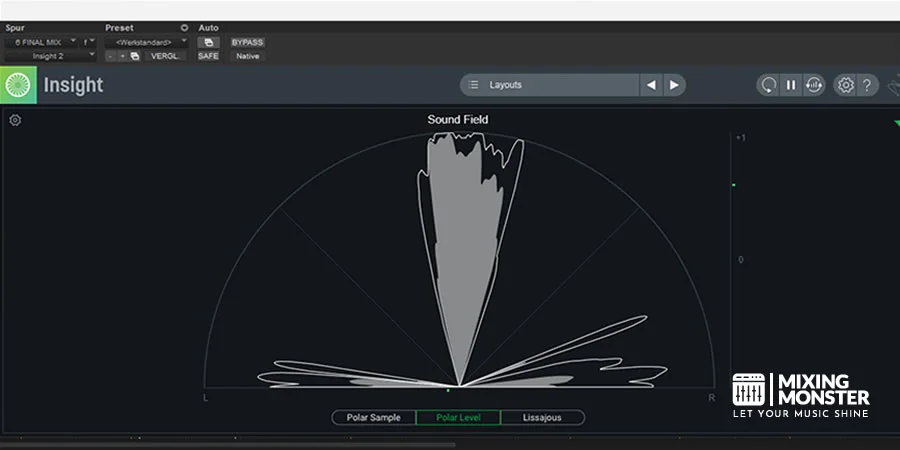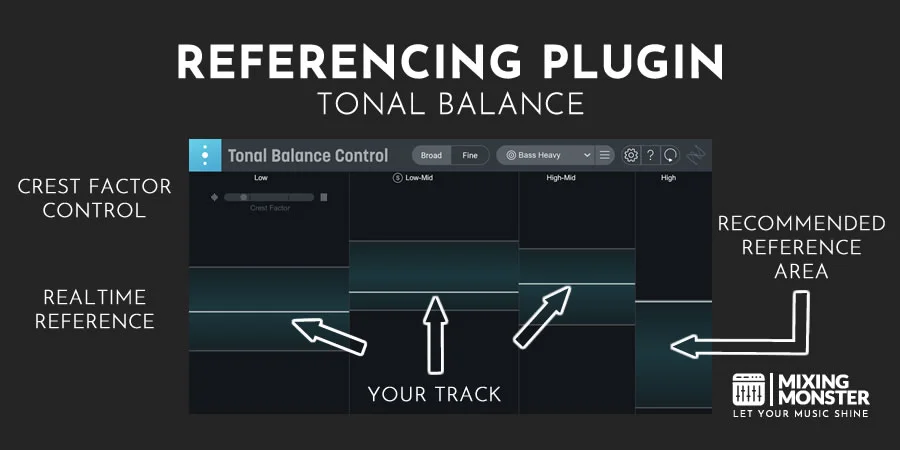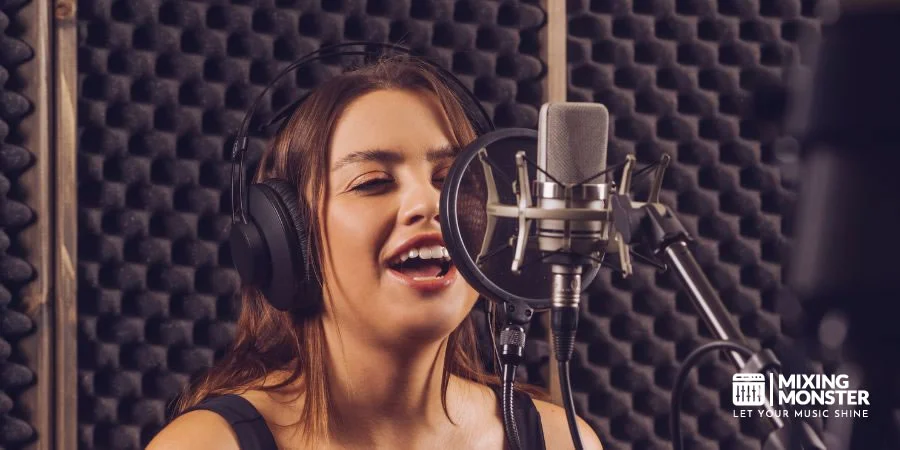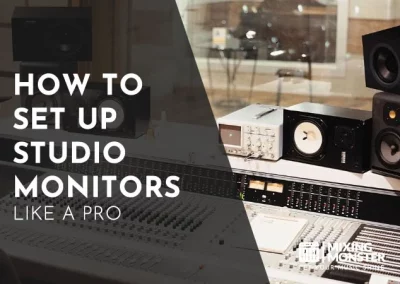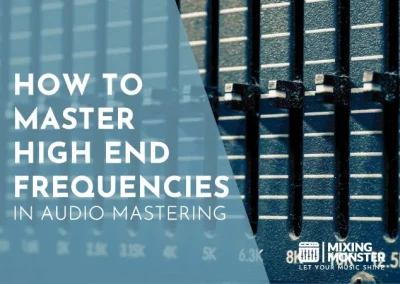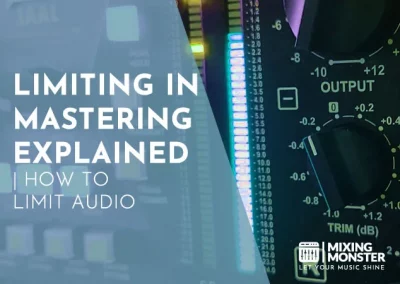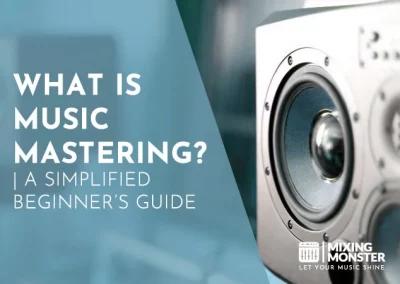Affiliate Disclaimer: We may earn a commission if you purchase through our links
Utilizing reference tracks significantly enhances music production. These professionally mixed and mastered songs provide a standard to aspire to, ensuring your mix aligns with the industry norms. They help balance the sound spectrum, perfect the stereo image, and create consistency across varied listening environments. Explore further to master the use of reference tracks.
Reference tracks are professionally mixed and mastered songs used as a benchmark in music production. They provide a standard for comparing and refining your mix, helping to ensure consistency, balance, and adherence to industry norms. Reference tracks play a pivotal role in music creation.
Ever wondered how professional musicians consistently create hit tracks with impeccable sound balance? Discover the secret behind their success: reference tracks, the unsung heroes of music production.
Table Of Contents
1. Introduction To Reference Tracks
2. The Role Of Reference Tracks In Music Production
3. How To Choose The Right Reference Tracks
4. Tips For Using Reference Tracks Effectively
5. Where To Get Reference Tracks
6. Case Studies: Successful Use Of Reference Tracks
7. Referencing Music: Key Takeaways
8. FAQ

1. Introduction To Reference Tracks
Understanding The Concept Of Reference Tracks
The term “reference tracks” might not ring a bell to those outside of music production, yet it’s one of the industry’s most valuable tools. So, what exactly are reference tracks?
In the simplest terms, reference tracks are professionally mixed and mastered songs that producers, mixers, and mastering engineers use as benchmarks when working on their projects.
These songs have proven their worth in the market and have something unique or exemplary about their audio production that others aspire to match or exceed.
Importance Of Reference Tracks In Music Production
In music production, reference tracks are akin to the North Star for sailors – guiding, inspiring, and providing a point of comparison. Why so?
- They Serve As A Quality Check:
Quality can be subjective in music. A reference track provides a tangible, industry-accepted standard to measure against. You can see how your track measures up in terms of dynamics, balance, loudness, and overall sound quality. - They Aid In Overcoming “Ear Fatigue”:
After hours of listening to the same mix, losing perspective is common. A reference track provides a fresh audio palette to reset your ears. - They Speed Up The Mixing Process:
By offering a clear goal, reference tracks can help expedite the mixing process, especially for beginners unsure about their sound direction.
There is a saying, “Good artists copy; great artists steal.” Now, we’re not suggesting stealing, but the concept stands. Utilizing reference tracks isn’t about replication; it’s about drawing inspiration, maintaining standards, and creating something unique with informed guidance.
And that, in essence, is the key to better music production.
In the following sections, we’ll delve deeper into the role of reference tracks, how to choose the right ones, tips for using them effectively, and where to find them.
Stay tuned, as we’ll also share successful case studies and answer some frequently asked questions about reference tracks.
Whether you’re an amateur music producer or an industry veteran, this comprehensive guide aims to enhance your understanding and practical usage of reference tracks.
2. The Role Of Reference Tracks In Music Production
Enhancing The Mixing Process With Reference Tracks
Reference tracks play a pivotal role in the mixing process. They serve as a template, helping you understand how different elements of a track — vocals, instruments, bass, treble, and more — should balance and interact with each other.
By comparing your mix with a reference track, you can identify any areas that need adjustment. Maybe the vocals in your mix are too subdued, or the bass is overwhelming. With a reference track, you get a reliable point of comparison.
Want to learn more about how to mix music? Here’s a detailed article for you:
Guiding The Mastering Process With Reference Tracks
Mastering is the final polish that ensures your track is ready for various distribution platforms and playback devices. Reference tracks are precious here as they let you evaluate the stereo width, loudness, punchiness, and overall tonal balance of your music.
With a reference track, you can ensure your track has the sonic clarity, fullness, and impact that matches the quality of commercially successful music.
Interested in learning how to master music? Here you go:
Ensuring Consistency Across Different Listening Environments
Have you ever noticed how a song can sound different in a car, on the phone, and through high-quality headphones? That’s because other playback systems can emphasize or weaken different frequencies.
Here’s where reference tracks come in handy. If your mix sounds good compared to the reference track on multiple playback systems, you can trust it will be consistent for listeners, regardless of how they’re tuning in.
Maintaining Industry Standards With Reference Tracks
There’s a wide range of mixing and mastering techniques, but the industry has its standards. Using a reference track ensures your music aligns with these standards.
For instance, it can prevent you from mixing a track that’s too quiet or loud compared to what listeners are accustomed to. In a way, reference tracks keep the music world turning on its axis, ensuring listeners expect a level of consistency and quality.
Meeting industry-standard loudness in different genres is vital:
In the next section, we’ll discuss choosing the right reference tracks — an essential step because the better your references, the better your end product will be. Let’s dive in!
3. How To Choose The Right Reference Tracks
Choosing the proper reference tracks can be as critical as the mixing process. But how do you select a track that best suits your needs? Here are some considerations:
Matching The Genre And Mood
Your reference track should ideally be in the same genre or convey the same mood as the music you’re producing. This is because different genres often have unique mixing styles and standard practices.
For example, a bass-heavy track might be the norm in hip-hop but not in acoustic folk music. So, by selecting a reference track that matches your genre, you align your mix with genre-specific expectations.
Analyzing The Mixing And Mastering Techniques
In addition to genre and mood, you should also consider the technical aspects of your reference track. Look for tracks that excel in areas where you want your mix to shine.
For instance, if you’re aiming for crisp vocals, pick a track where the vocals are mixed exceptionally well. Choose a track that nails the bass if you’re focusing on a powerful low end.
Considering The Popularity And Listener’s Reception
It’s often beneficial to select reference tracks that are popular and well-received by listeners. After all, these tracks have connected with the audience and stood the test of time. They can provide valuable insights into what works well in resonating with listeners.
Selecting the right reference tracks is the first step in leveraging them effectively. But how do you use these tracks to improve your mix? In the next section, we’ll provide tips for using reference tracks effectively to enhance your mix and, ultimately, your final track.
Stay tuned for more insights into the world of reference tracks and their significant role in music production!
4. Tips For Using Reference Tracks Effectively
Once you’ve selected your reference tracks, the next step is to use them effectively to enhance your mix. Here are some essential tips:
Balancing Your Mix With Reference Tracks
One of the primary uses of reference tracks is to help balance your mix. Listen to your reference track and note how the different elements — vocals, drums, bass, and other instruments — interact.
Is the bass overpowering the vocals? Are the drums too soft compared to the rest of the mix? Use these observations to guide the balancing of your mix.
Noting The Stereo Image Of A Reference Track
The stereo image — how sounds are distributed between the left and right speakers — plays a vital role in a track’s depth and spatial feel. By studying the stereo image of your reference track, you can understand how to pan your mix elements effectively.
Focusing On Frequency Balance Of A Reference Track
Each track has its unique frequency footprint, and understanding this can significantly enhance your mix. Note the low, mid, and high frequencies in your reference track.
How bright is the mix? How deep is the bass? Use a spectrum analyzer to represent these frequencies visually, and strive to match your mix to that balance. Watch out for problematic frequency areas in your mix as well.
Remember, while reference tracks serve as an essential guide, they aren’t a template to copy exactly. Your music should have its own identity. Use reference tracks to inform your decisions, not dictate them.
The journey to better music production with reference tracks continues further. In the next section, we’ll dive into where to find the best reference tracks to up your mixing game. So, keep reading to learn more!

5. Where To Get Reference Tracks
Now that we’ve covered how to use reference tracks effectively, you might wonder where to find these valuable resources. Here are some places to start your search:
Online Music Platforms
Streaming platforms like Spotify, Apple Music, and YouTube are excellent places to start. These platforms house millions of tracks spanning various genres, styles, and eras. Their playlist features can help you easily organize your chosen reference tracks.
Music Production Websites And Libraries
Certain websites and libraries cater specifically to music producers, offering collections of high-quality reference tracks. These resources often feature tracks carefully curated for their mixing and mastering qualities.
Personal Collections And Professional Networks
Remember your personal music collection or the collections of other music professionals in your network. Often, the music you’re most familiar with can be the most helpful reference.
Remember, the key is to select tracks that match your intended output in genre, mood, and technical aspects. With the right reference tracks, you’re well-equipped to produce high-quality music that resonates with listeners.
In the next section, we’ll delve into some real-life case studies of the successful use of reference tracks, which will inspire you to use them in your music production process. Stay tuned!
6. Case Studies: Successful Use Of Reference Tracks
Examining real-world scenarios where reference tracks have been used successfully can provide valuable insights and guidance for your work. Let’s delve into a couple of case studies:
Using Reference Tracks: Case Study 1
Let’s consider an independent artist struggling with their debut album’s mixing process. They loved the powerful, emotive vocals of a famous alternative rock track and decided to use it as a reference.
They significantly improved their vocal clarity and overall mix quality by closely comparing the reference’s balance, EQ, and dynamics with their mix. Their debut album was well-received, with critics and fans praising the robust and dynamic vocals.
Using Reference Tracks: Case Study 2
A music producer worked on a house music track but needed help to achieve a powerful, driving bass. They chose a commercially successful house music track as their reference, famous for its energetic bassline.
The producer could adjust their mix by analyzing the reference track’s low-frequency balance and stereo imaging, achieving a more robust and immersive bass sound. This greatly enhanced the final track’s dancefloor impact, leading to positive listener feedback and some club play.
These case studies highlight the power of using reference tracks in music production. They serve as inspiring examples of how reference tracks can assist you in achieving your desired sound, whether you’re an independent artist or a seasoned music producer.
In the next section, we’ll recap the key takeaways from this comprehensive guide to using reference tracks. Read on to consolidate your learning!
7. Referencing Music: Key Takeaways
Now that we’ve explored the various aspects of using reference tracks in music production let’s summarize the critical takeaways from this guide:
How To Use Reference Tracks: Critical Takeaways
- Reference tracks serve as benchmarks for your mix, guiding your mixing and mastering decisions.
- It’s crucial to select reference tracks that align with your genre, mood, and desired sound quality.
- Reference tracks help balance your mix, guide stereo imaging, and influence frequency balance.
- Use reference tracks as a guide and inspiration, not a template to copy exactly. Your music should have its unique identity.
- Music platforms, production websites, and personal collections are excellent sources for reference tracks.
Next Steps In Leveraging Reference Tracks
Practice makes perfect. The more you use reference tracks, the more intuitive and efficient the process becomes. It will help you develop a keen ear for mixing and mastering, which is crucial for any music producer.
Remember, the aim is not to replicate the sound of the reference track but to bring your music closer to industry standards while maintaining its unique character and creativity.
That’s all for our guide on how to use reference tracks for better music production. Remember, every track is unique, and what works for one may not work for another. Use reference tracks as a guide, not a rulebook.
Happy referencing!
8. FAQ
- What Are Reference Tracks And Why Are They Important?
Reference tracks are commercially successful, professionally mixed, and mastered songs used as a guideline in the music production process. They are vital because they provide a standard to aim for, help you make informed decisions about mixing and mastering, and ensure consistency and quality in your final track. - How Do I Choose A Good Reference Track?
Choose a reference track that matches your music’s genre, mood, and desired sound quality. Additionally, it’s often beneficial to select popular and well-received tracks, as they can provide valuable insights into what resonates with listeners. - How Can I Use A Reference Track To Improve My Mix?
Use your reference track to guide your decisions about the balance of your mix, the stereo image, and the frequency balance. Listen closely to how different elements interact in the reference track, and strive to achieve an equal balance in your mix. - Can I Use Multiple Reference Tracks For A Single Project?
Using multiple reference tracks can provide a broader perspective and guide you in different aspects of your mix. However, be mindful of maintaining the coherence and identity of your track amidst multiple references. - What Are Some Mistakes To Avoid When Using Reference Tracks?
Avoid using reference tracks as a template to copy precisely — your music should have its own identity. Also, make sure not to compare your raw mix directly with a fully mastered reference track, as this can be discouraging and misleading. Remember to adjust the volume of the reference track to match your mix for accurate comparison.

